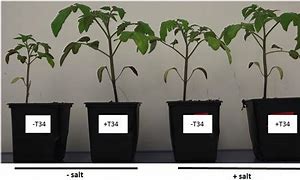Cucumbers are a popular and versatile vegetable that is enjoyed worldwide. Whether used in salads, pickles, or even refreshing drinks, the demand for high-quality cucumber production is constantly increasing. However, cucumber plants are susceptible to various diseases, which can significantly impact crop yield and quality.
To optimize cucumber production, growers must employ effective disease prevention strategies. One such strategy is the use of Trichoderma harzianum, a beneficial fungus that has proven to be highly effective in combating plant diseases. In this post, we will explore how Trichoderma harzianum can be utilized to prevent diseases in cucumber plants, boosting their overall quality and productivity.
Understanding the Importance of Disease Prevention in Cucumber Production
Diseases can pose major challenges to cucumber production, leading to wilted plants, decreased yield, and compromised quality. One common disease that affects cucumber plants is Fusarium wilt, caused by the pathogen Fusarium oxysporum. This soil-borne disease infects the vascular system of the plant, disrupting water and nutrient uptake. As a result, leaves turn yellow, wilt, and eventually die.
Another disease that affects cucumber plants is powdery mildew, caused by the fungus Podosphaera xanthii. It appears as a white powdery substance on the leaves, stems, and even fruits, inhibiting photosynthesis and reducing the plant’s vigor.
Trichoderma harzianum for Disease Prevention
Trichoderma harzianum is a naturally occurring beneficial fungus found in the soil. It acts as a biocontrol agent, suppressing the growth of pathogenic organisms and promoting plant growth. When applied to the soil or as a seed treatment, Trichoderma harzianum colonizes the root system of cucumber plants, forming a protective barrier against soil-borne pathogens.
One of the key mechanisms by which Trichoderma harzianum protects cucumber plants is through competition. It competes with disease-causing pathogens for space and nutrients, reducing their ability to establish and spread. Additionally, Trichoderma harzianum produces enzymes that degrade the cell walls of pathogens, further inhibiting their growth and colonization.

The Effectiveness of Trichoderma Harzianum: Evidence from Research
Extensive research has been conducted to evaluate the effectiveness of Trichoderma harzianum in disease prevention. Several studies have demonstrated its ability to suppress Fusarium wilt in cucumber plants. For example, a study conducted by researchers at Novobac, a leading bioinnovation company, showed that Trichoderma harzianum effectively controlled Fusarium wilt, resulting in increased plant growth and yield.
In another study, researchers evaluated the impact of Trichoderma harzianum on powdery mildew control in cucumber plants. The results revealed a significant reduction in disease severity and an increase in plant health and productivity when Trichoderma harzianum was applied as a preventive measure.
Implementing Trichoderma harzianum in Cucumber Production
To optimize disease prevention in cucumber production, it is essential to incorporate Trichoderma harzianum into the cultivation practices.
1. Choose high-quality Trichoderma products:
Ensure that you select a reliable and effective Trichoderma harzianum product, such as Novobac’s Trianum Shield. These products are specifically formulated to provide maximum disease control.
2. Apply Trichoderma Harzianum as a seed treatment:
Treat cucumber seeds with Trichoderma harzianum before sowing. This ensures that the beneficial fungus establishes itself along with the growing roots, providing early protection against diseases.
3. Incorporate Trichoderma harzianum in soil:
Apply Trichoderma harzianum products to the soil around the cucumber plants during planting or transplanting. This allows the beneficial fungus to colonize the root system and form a protective barrier against soil-borne pathogens.
4. Follow recommended application rates and timings:
It is crucial to follow the manufacturer’s instructions regarding application rates and timings to ensure optimal disease control.
5. Practice proper crop rotation:
Implement a crop rotation strategy that involves rotating cucumber plants with non-host crops. This helps break the disease cycle and reduces the build-up of pathogens in the soil, providing a healthier environment for cucumber plants.
6. Use sterilized or pathogen-free soil:
Before planting, ensure that the soil is sterilized or pathogen-free. This reduces the presence of disease-causing organisms, allowing Trichoderma harzianum to establish and thrive more effectively.
7. Monitor and maintain ideal environmental conditions:
Regularly monitor the temperature, humidity, and ventilation in the cucumber production area. Trichoderma harzianum performs optimally under specific environmental conditions, and maintaining these conditions promotes its growth and effectiveness in disease prevention.
8. Assess the efficacy of Trichoderma harzianum:
Periodically evaluate the performance and effectiveness of Trichoderma Harzianum in disease prevention. Conduct plant health assessments, disease incidence surveys, and yield evaluations to gauge the success of incorporating Trichoderma harzianum into the cultivation practices.
9. Seek professional advice:
Consult with agricultural experts or agronomists who specialize in cucumber production and disease management. They can provide guidance on the proper use of Trichoderma harzianum and offer personalized recommendations based on your specific growing conditions.
In conclusion, disease prevention is crucial for optimizing cucumber production. Trichoderma harzianum, a beneficial fungus, offers significant benefits in combating diseases like Fusarium wilt and powdery mildew. By incorporating Trichoderma harzianum-based products, such as Trianum Shield, into cultivation practices, growers can effectively enhance crop health, increase yield, and improve overall cucumber quality.
